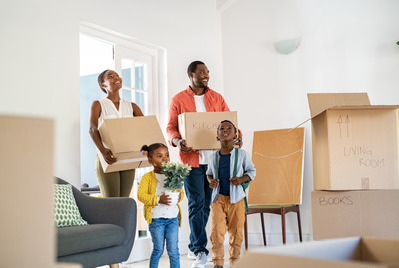
Place making is increasingly a focus for developers seeking to create communities with long term value and legacy. As the full effects of the Covid-19 pandemic on our lives, continue to develop and reveal themselves, our homes, the places where we spending our time, are more important than ever. Effective place making can mean that newly built homes are not just hollow shells, but, are part of a buzzing community, where people cannot just live, but thrive.
In the second of a series on how developers can build developments with residents’ wellbeing in mind, we look at how creative workspaces help to establish place identity and ultimately enhance a developments value.
A recently published report, commissioned by the Creative Land Trust, discovered that residential developments in areas with creative workspaces demonstrably outperform other residential developments. In case studies over the last 10 years across London and the Thames Estuary, plenty of examples were found of developments with increased demand and enhanced economic value because of creative industries.

Areas where creatives like, artists, performers and musicians worked, were recognised as having a ‘buzz’ that attracted people to live there, and with the pandemic seeing a rise in people spending time locally, the importance of ‘buzz’ is only increasing. Creatives are often an important part of an areas regeneration because they signal cultural value, and there is also a recognition that creatives make better neighbours than other commercial premises like noisy bars or cafes.

In fact, the benefits of creative workspaces over other commercial uses might apply to developers too. Whilst the immediate economic value is perhaps not as high, artists make reliable tenants, partly because a widespread shortage of affordable workspaces like studios and rehearsal spaces makes demand high and spaces precious. Of course, the benefits of creatives also accrue to developer’s long term as developments become cultural hubs.

Developer HUB’s project in Digbeth in Birmingham is taking advantage of an existing creative neighbourhood, but also seeking to integrate into it through a mixed use development. Managing Director Damien Sharkey considers creative spaces within residential schemes as important to reviving high streets into places with a sense of identity and community, and hopes the Digbeth scheme will improve quality of life for residents.
Of course, popping a studio to rent into the bottom floor of a tower block, or the middle of an estate, won’t simply see a hike in prices. It’s more complex than that, for starters, it’s reported that a critical mass is necessary, a certain number of creatives in an area to give it a creative reputation overall. However, it is evident that devoting money and square footage to dedicated creative workspaces will have tangible benefits for developers, residents and creatives themselves.
If you are a developer looking for land or various sites to develop, get in touch with one of our experts who can help you find the right location.
Contact us for today for more information
Sources
- Creative Places Create Value – The Impact of Creative Workspace on Local Residential Property, produced by Dataloft, Ramidus Consulting, Hawkins\Brown, Creative Land Trust, Creative Estuary & Get Living
- Architects Journal – Creative workspaces can replace retail and bring new life to urban centres, Damien Sharkey




